Table of Contents
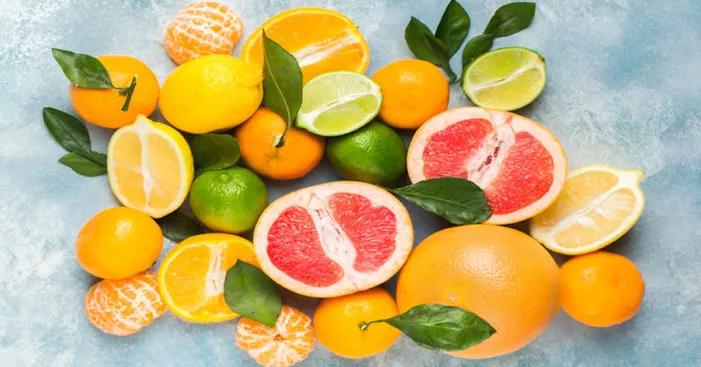
Juicing oranges is a great way to boost your health and well-being.
Not only is orange juice delicious and refreshing, but it’s also packed with essential vitamins and minerals that your body needs.
In this blog post, we’ll explore the many benefits of juicing oranges, from boosting your immune system to improving your skin.
We’ll also provide some tips and tricks for making the perfect orange juice, as well as some delicious recipes to try at home.
Whether you’re new to juicing or a seasoned pro, this post is sure to give you all the information you need to start reaping the benefits of orange juice today.
So, grab your juicer and let’s get started on a journey to better health and wellness with the power of oranges.
Best oranges for juicing:
Orange is one of the most famous citrus fruits that people like to consume all year around for its refreshing qualities.
There are many types of oranges all around the world and they can be put in to two main categories:
- Sour oranges (Citreae aurantium).
- Sweet oranges (Citreae Sinensis).
While bitter oranges are usually used to make marmalade and jellies, sweet oranges are suitable to make juices.
Navel orange:
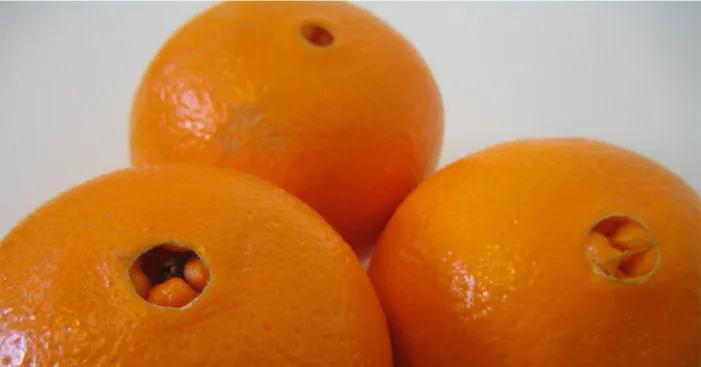
This type of juicing oranges comes with bright orange insides and dominates the western markets.
It grows in Spain, Morocco during fall and winter, and the Southern hemisphere, South Africa during spring and summer.
The color of this fruit is orange with a thin rough skin and sweet but yet pronounced flavor and a navel-like umbilicus on its bottom.
Navel oranges have good gustatory qualities and come with no seeds and easy-to-peel skin.
The insides of this type of orange are firm, fine, and sweet with medium juiciness depending on the season.
The navel orange tree is of medium size and comes with dark green leaves and medium-sized fruits.
People who are fond of this fruit mostly choose navel oranges for their flavor which is a mix of sweetness and sourness.
Also, chefs from around the world favor this type of orange for their flavoring sauces and zesting.
Jaffa Orange:
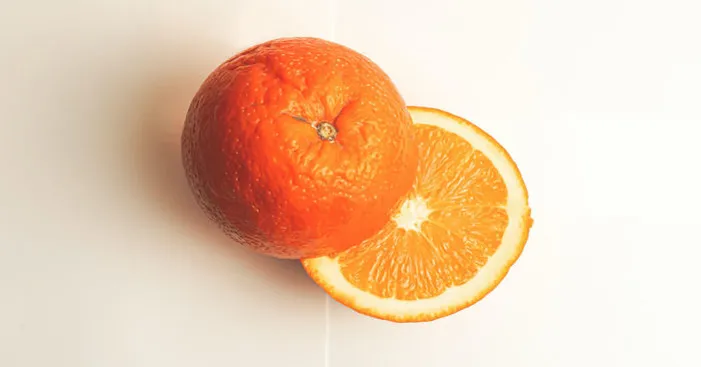
Jaffa or Shamouti is a type of orange that comes with few seeds and hard skin which makes them perfect for exportation.
The first citation of this type dates back to the 19th century when Ottoman farmers developed it in the city of Jaffa.
During those days, citrus was the main export for the city of Jaffa and one of the three types of juicing oranges of the Mediterranean.
Later on, farmers from Iraq, Cyprus, Lebanon, Syria, and Turkey started also growing Jaffa oranges as they have similar weather.
However, the production of Jaffa oranges is much lower today compared to how it used to be in the past.
In the 1950s, Jaffa oranges became the emblem of the state of Israel.
In fact, Jaffa orange is the origin of the name of the city Tel-Aviv-Yafo AKA “Big Orange”.
Maltese Orange:
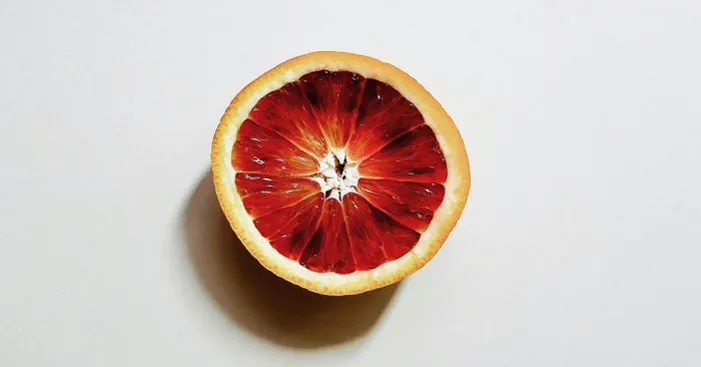
This next juicing orange type is small with slightly thin skin, a bloody inside, and a tangy juicy flavor.
The Maltese orange belongs to the tribe Citreae which is part of the Rutaceae family.
Maltese oranges are semi-sanguine and are among the types of oranges that grow in North Africa, mainly in Tunisia.
Globally, the Tunisian Maltese oranges are described as the best oranges in the world.
In Tunisia, this fruit thrives in the Peninsula of Cape Bon, in 16,000 acres (45%) flooded by the sun and devoted to the production of Maltese oranges.
Taking almost half of the area since it dethrones other Tunisian orange types including Châmi, Meski, or Thomson.
Cape Bon is a land very fertile since antiquity and contains traces of the ancient culture of Andalucía.
In 2010, Tunisia produced over 110,000 tons of Maltese oranges of which 22% were exported.
In Menzel Bouzelfa, a city in Cape Bon, Tunisia organizes each year in March, the Festival of oranges, which gains traction from around the world.
When it’s still in the tree, Maltese oranges are bright orange with a red side when it’s exposed to the sun.
This is due to a red pigmentation that colors the skin of this fruit and gives it a unique color.
The peel of Maltese oranges is the most aromatic and makes the best zest, the reason why it is present in many sweet recipes.
Moro orange:
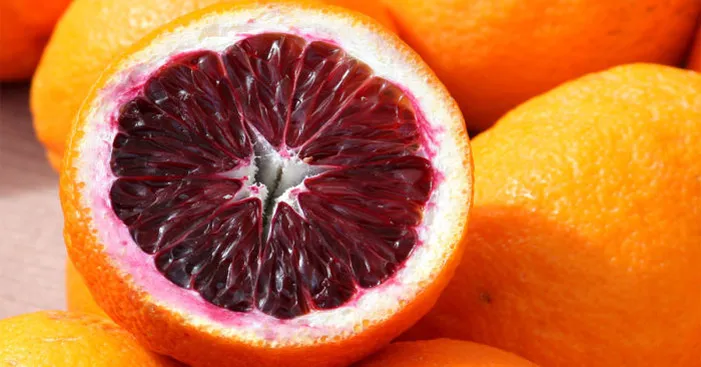
This next juicing oranges type defies the classic orange color that gave this fruit its name because it has purple insides!
Moro oranges are among the blood oranges and come with an intense red to dark purple pulp.
This orange grows in colder regions and the tree maintains evergreen long pointed leaves.
In spring, its flowers blossom with an intense perfume and the fruits flourish and are ready to pick by January.
Generally, people love blood oranges for their juiciness which is perfect to make ice creams and sorbets.
In a fruit salad, they can add a colorful touch and add value to the vitamin content and chefs use it to marinate fish.
The juice of this type of orange looks almost like red wine and has a slight raspberry note to its taste.
The purple color comes from the abundance of anthocyanin, which is a coloring pigment that flourishes in cool temperatures.
These same anthocyanins give Moro oranges additional antioxidant properties which makes them a healthy choice.
Portuguese Orange:
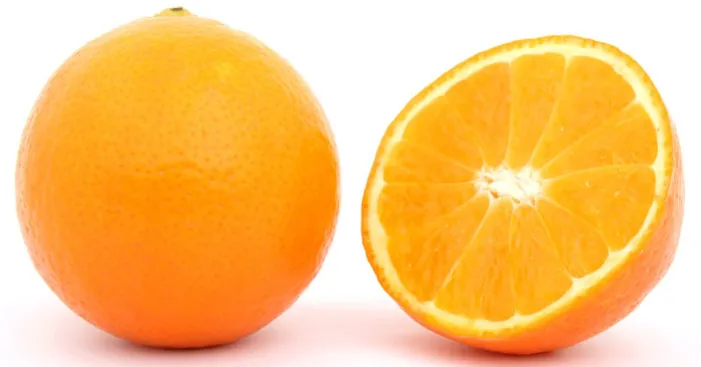
In many countries, the name used for orange is almost identical to the name Portugal: that is not by coincidence!
Orange trees in Portugal belong to the Citrus sinensis tribe and produce blood oranges perfect for juicing.
Ancient story:
Let’s delve into ancient names of oranges around different cultures and through different times:
During the middle ages, Arabs imported Bigarade, bitter oranges, from India.
The name of this bitter type of oranges in the Muslim world is “naranj” which is a Persian word that means “perfumed”.
This same variety, arrived by Muslims to Europe through Sicily where Italians named it “arancio”.
Bingo! That was the origin of the word “orange” we use nowadays.
However, the Portuguese name is “laranja”, which seems to come directly from Arabic through Andalucía.
Portuguese oranges are usually cooked and their bitterness is compensated by sugar as in the orange marmalades recipe.
During the 16th century, Europe went on several journeys.
The Portuguese with their great discoveries, started commercial relations with the Asian continent, the first of its kind.
Among the products that the Portuguese brought from China was the sweet orange.
That sweet orange adapted very well to the Portuguese climate and became very famous as one of the biggest exportation of Portugal.
At those times, most of the oranges of the Arabs and the Ottoman Empire were bitter.
So they adopted the name “Portugal” for the only sweet variety they knew at that time.
Here are different names of oranges that links to the word “Portugal”:
- Neapolitan: purtuallo.
- Greek: portokali.
- Romanian: portocaliu.
- Turkish: portakal.
- Arabic: Burtuqal.
Portuguese oranges nowadays:
Portuguese oranges are sweet and best eaten fresh, unlike the ancient Portuguese bitter oranges which should be cooked.
In some way, it is funny that all of these countries linked the word “orange” to the word “Portugal”.
However, it is like a very good way to pay credits for the country that introduced the sweet orange to the Mediterranean countries.
On the other side of Europe, the Northern countries kept Portuguese oranges as a luxury fruit as it doesn’t grow in cold.
Nowadays, you can find that type of fruit everywhere in our markets around the world.
Blood orange:
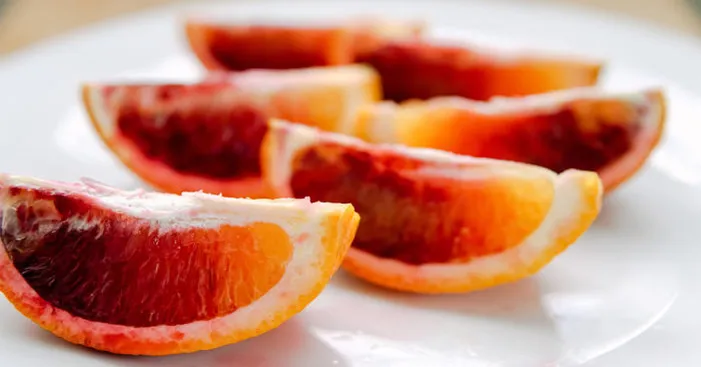
If you ever saw a dark orange (almost red) juice, it is mostly made of blood orange!
In Italy, this type of orange is called “roja” or “sanguine” which means “red” or “blood” hence the name in English.
This variety of juicy oranges grows across the Mediterranean and is among the “Citrus sinensis” trees which are known for redness in their pulps.
The redness of the pulp progresses as the fruit matures, and can be both in and outside depending on the type and temperature variations.
Just like the Moro oranges, the redness of blood oranges is due to their high content of anthocyanins, the same pigment that colors blueberries.
Oddly, this pigment is not common as most oranges color is due to the existence of another coloring pigment: carotenoids.
The anthocyanin content of blood oranges gives them additional antioxidant content which benefits our health.
Blood oranges are mainly used for their juiciness to make a juice that is more acidic compared to that of navel oranges.
Nowadays, chefs around the globe use its juice for their cold recipes like delicious sorbets.
Also, they made their way to many other recipes including seafood dishes.
Valencia Orange:
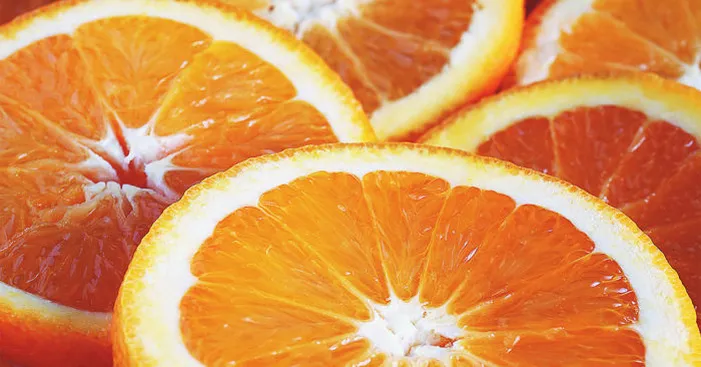
This next juicy orange is also among the Citrus sinensis same as the Portuguese oranges.
It is a cultivar of a hybrid of sweet orange made by the Californian agronomist William Wolfskill in Southern California, USA.
Unlike Navel oranges, the Valencian orange is a late bloomer, which is why some people call it “Valencia Late”.
Nonetheless, these oranges come in medium to large sizes with easily peeled skin.
As for the flavor, they have a sweet flavor with an acidic touch that differs from that of Navel oranges.
This unique flavor is the result of the geographical location of Valencia which provides perfect weather for this type of tree.
Around the world, Valencia oranges are considered one of the best oranges for juicing alongside the Tunisian Maltese.
Tarocco orange:
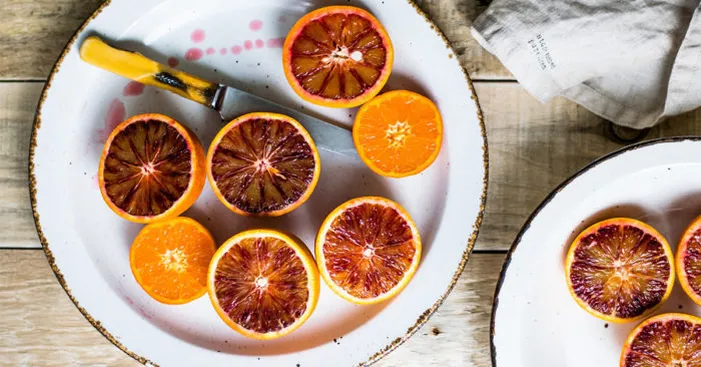
This type of juicing orange is of medium size with a sweet and very intense flavor.
Torocco oranges grow mostly in Italy and some people believe it is a mutation of the Sanguinello family.
However, the Torocco trees are also late bloomers (like valencia oranges) and produce fruits that are very high in vitamin C.
Torocco oranges grow in hilly lands and start to ripen in December and end in May.
This juicy orange has bright orange skin that has red dots once ripen.
As for its pulp, it is mainly orange with red pigmentation that resembles the shape of blood vessels.
They are best consumed fresh but they are also made in our kitchen to marinate fish or juiced into a yummy orange juice.
Different orange juice recipes:
Strawberry Orange Juice:

Ingredients:
- 2 cups of orange juice.
- 3 cups of strawberries chopped into small pieces.
- 1 cup of sparkling water.
- 2 tbsp. of sugar (optional).
Preparation:
- Put all of the ingredients together in a blender.
- Blend them together to obtain a thick juice.
- Serve the juice with ice cubes for an additional refreshing.
Notice:
It is best to serve strawberry and orange juice immediately before the sparkling water loses its carbonation.
Orange juice with mint and lemon:

Ingredients:
- ½ cup of water.
- 10 juicing oranges of any type.
- 1 cup of sugar.
- 5 large lemons.
- 1 cup of mint leaves.
- 6 cups of sparkling water.
Preparation:
- In a small pan, cook the sugar and water on medium heat until the sugar dissolves.
- Slice 2 lemons and add it to the pan and leave the mixture on heat until it boils and becomes thick, then remove it.
- Now add the mint leaves to the mixture and let it cool down.
- Cut the juicing oranges and the remaining lemon in half, then juice them into a container.
- Add the sugar + lemon syrup to the juice and mix them all together until you have a mixture.
- Put ice cubes in serving cups, then spread a few mint leaves in each of them and pour the obtained juice into the cups.
The obtained lemon and orange juice can be stored in the refrigerator in an airtight bottle for several days.
Orange and cantaloupe juice:
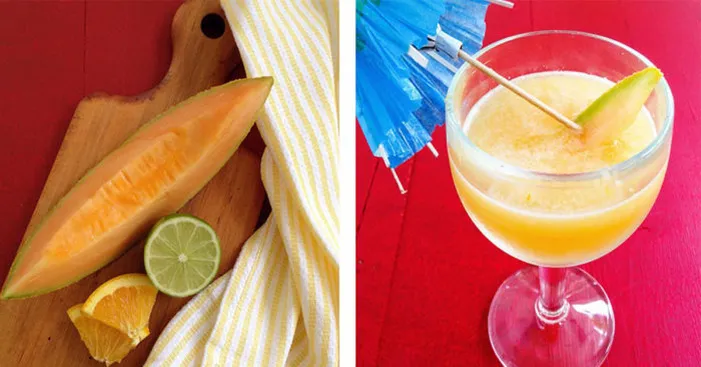
Ingredients:
- 3 juicing oranges.
- 1 cantaloupe.
Preparation:
- First, start by peeling the oranges and spread them into pieces.
- Then peel the cantaloupe using a sharp knife and cut it into small pieces.
- In a mixer, put the cantaloupe and orange pieces and blend them until you obtain a juice, then set them aside.
- You can now serve them into cups with a few ice cubes for a little refresher.
Orange juice and carrots:
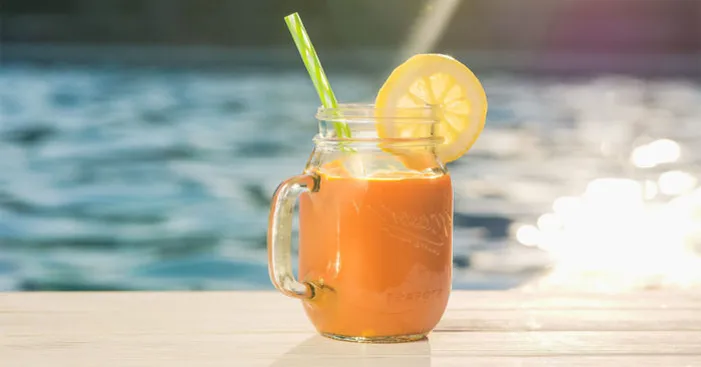
Ingredients:
- Five navel oranges.
- Two peeled carrots.
- 1 glass of water.
- 1 tbsp. of sugar.
Preparation:
- Start by chopping the carrots into small pieces.
- Peel the navel oranges and divide them in sections, then put them together with the carrot pieces in a blender.
- Now pour the cup of water and the sugar also in the blender.
- Blend all the ingredients together and the juice is ready!
Tofu Orange Smoothie:

Ingredients:
- 1 cup of soft tofu.
- 2 cups of frozen berries (mixed).
- ½ cup of fresh berries.
- ¼ cup of orange juice.
- 3 tbsp. of honey.
- 2 tbsp. of oats.
- 1 tbsp. of grated ginger.
- 1 tbsp.of granola.
Preparation:
- Put all the ingredients together in a mixer.
- Run the mixer for 20 to 30 seconds until you obtain a smoothie.
Orange Raspberry Smoothie:

Ingredients:
- Two navel oranges.
- 1 cup of frozen blue raspberries.
- 1 cup of frozen red cranberries.
- 1 scoop of vanilla protein powder.
- Granola and mixed fruits skewers for garnishing.
- Ice cubes.
Preparation:
- Blend all of the ingredients together until you obtain a smoothie.
- Pour the smoothie in chops or cups and garnish it with granola and fruits before you serve it.
Orange Banana Juice:
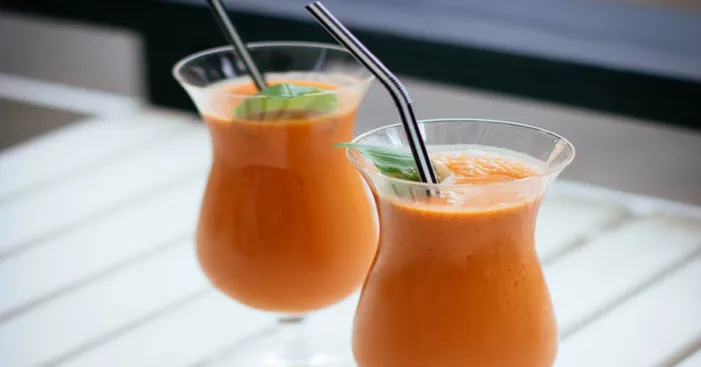
Ingredients:
- 2 cups of orange juice.
- 1 Banana sliced.
- 6 sliced strawberries.
- 3 tbsp. of sugar.
- Five ice cubes.
Preparation:
- Pour the orange juice into the bowl of a mixer, and add banana pieces, strawberries, and sugar to the bowl.
- Blend the ingredients together until you get a smoothie.
- Now add ice cubes and blend again until the mixture is soft.
- The smoothie is now ready and you can serve it.
Nutritional values and health benefits of orange juice:
Orange Juice nutrition:
This data counts for 8 ounces (240ml) of fresh orange juice and contain:

- Calories: 105
- Fibers: 0
- Proteins: 1.5g
- Carbs: 22.3g
- Sugar: 19.6g
- C vitamin: 160%
- B1 vitamin: 15%
- B5 vitamin: 7%
- B6 vitamin: 7%
- B9 vitamin: 33%
- Potassium: 24%
- Copper: 7%
- Magnesium: 10%
- Phosphorus: 5%
- Selenium: 43%
Health benefits of orange juice:
These types of juicing oranges are full of nutrients and consuming them fresh or juiced improves our health in many ways such as:
Improves the immune system:
Thanks to its high content in vitamin C, juicing oranges boost the immunity system.
It is because vitamin C acts as an antioxidant in the body that helps fight free radicals and repair damaged cells.
Cleanses the body of toxins:
Another abundant nutrient in juicing oranges is vitamin A, which plays a key role in cleansing our system from toxins.
Vitamin A stimulates our kidneys which leads to a better cleaning ability and a body free of toxins.
Increases blood circulation:
Orange juice is full of vitamin B9 (folate), which is an essential component for creating red blood cells which leads to a better blood flow.
May reduce the risk of cancer:
Just like we mentioned how vitamin C improves immunity, it may be very beneficial in reducing the risk of cancer.
In fact, vitamin C reduces the accumulation of free radicals, therefore, lowers the risks of carcinogenic formation.
Also, it promotes the growth of healthy cells which results in a lower risk of getting the disease.
Other benefits of juicing oranges:
It is not possible to mention all of the benefits of this amazing fruit, but the most important are:
- Reduces the level of high blood pressure.
- Protects against kidney stones.
- Lowers the risks of several infections.
- Helps to balance cholesterol in the body.
- Promotes heart health.
Benefits of orange juice for children and infants:
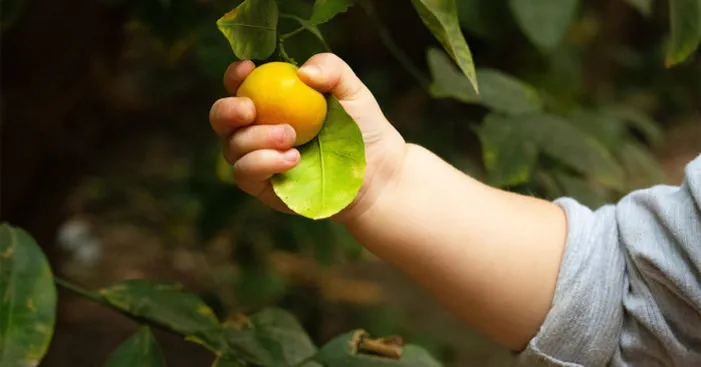
At the moment, there are not studies that show the benefits of orange juice for kids and infants.
Nonetheless, orange juice is very rich in nutrients that benefit the overall health of the human body.
In fact, orange juice may be a lovely way to introduce little kids to this fruit since it’s easier to consume.
It is best to start serving natural orange juice for toddlers above the age of 6 months, and of course, avoid industrial products.
It is because most of the industrial products are very high in calories and may increase weight and cause tooth decay.
Therefore, it is a better choice to serve juice freshly made from juicing oranges in small quantities, around ¼ of a cup (60ml) daily.
Is orange juice good for constipation?

To start with, there are no scientific studies that show the effectiveness of orange juice to relieve constipation.
Unlike most fruit juices, orange juice is low in dietary fibers which are linked to the well-being of the digestive system.
With that being said, it is better to count on other types of juices such as lemon juice or orange juice and carrots … to deal with constipation.
Side effects of orange juice:

The consumption of orange juice in moderate amounts is usually safe for both children and adults.
Also, this applies to pregnant and nursing women as long as they consume juicing oranges, fresh or juiced in nutritional amounts.
However, this may not be the case for a certain group of people including:
People who suffer from heartburn:
Drinking orange juice or consuming oranges doesn’t usually have a harmful effect, but it can inflame an already existing heartburn.
Its content in organic acids such as citrus acid, ascorbic acid, or vitamin C, aggravates the symptoms of heartburn.
People with allergies:
Generally speaking, people who suffer from herbal allergies most likely will develop a citrus allergy.
Even though an allergy to oranges is not common, but its occurrence may lead to serious symptoms.
These symptoms can occur by just touching an orange or come in contact with its juice or any products that contain it.
Nonetheless, in most cases of orange allergy, symptoms can take hours to show.
Also, a certain group of people allergic to oranges may have an allergic reaction after inhaling citrus particles in the air.
These are some of the symptoms that these allergic people may experience:
- Bloating.
- Itching.
- Tingling sensation.
This next group of symptoms occurs in case of contact dermatitis, which happens after coming to contact with orange peels or juice:
- Intense itching.
- Bloating.
- Skin rash and burning sensation.
- Hives (Urticaria).
- The appearance of blisters.
- Dryness of the skin.
As for those who have an allergic reaction after consuming any type of juicing oranges or their juice:
- Vomiting.
- Stuffy nose.
- Nausea.
- Stomachache.
- Coughing.
- Diarrhea.
- Sneezing.
For those who have Anaphylaxis, which is a shock that causes the immune system to release chemicals that cause allergic symptoms.
Medical intervention is necessary because it’s a life-threatening situation, in the case of any of these symptoms:
- Loss of consciousness.
- Difficulty breathing.
- Nausea, diarrhea, and vomiting.
- Swelling of the throat and tongue.
- Low or high heart rate.
- Redness on the skin.
- Drop in the blood pressure.
Anyhow, most people don’t have allergies to juicing oranges but it should also be noted that oranges can interact with medicines.
These are some of the common drugs with which oranges may interact:
Pravastatin:
Drinking orange juice results in higher absorption of this drug, which may increase the possibility of side effects.
Ivermectin:
Unlike Pravastatin, drinking orange juice can reduce the absorption of this drug, which leads to reducing its effectiveness.
Celiprolol:
Just like Ivermectin, consuming any type of juicing oranges reduces the absorption of this medicine.
In this case, it is best to consume orange juice for 4 to 5 hours before taking this drug.
Quinolone:
This is a class of antibiotics including Trovafloxacin, Levofloxacin, and Ciprofloxacin.
However, drinking orange juice enriches the body with calcium and reduces the effectiveness of these drugs to fight infections.
Fexofenadine:
Also eating different types of juicing oranges or drinking their juice reduces the body’s ability to absorb this drug.
How to buy the best oranges for juicing:

If you are going to buy juicing oranges to make a refreshing natural juice, you definitely need to know a few tricks.
First, to pick the best fruits, don’t hesitate to pick up the orange in your hands and feel its skin.
The skin of a good orange should feel smooth and by squeezing the fruit a little bit, it should feel tender on the inside.
Most people rely on the color of the orange which can trick you, as some fruits have a bright color but very little juice.
Also, a good orange can even be green but very ripe just like a clementine.
In addition, try to read the label to make sure you are buying a juicing orange instead of table use or citrus.
How to store orange juice?
Most people just store their homemade orange juice in the refrigerator, however, the use of the right bottle is essential.
This also applies to any other type of fruit juice including apple juice, lemon juice, grape juice…
The bottle used must be airtight as contact with air may reduce the nutritional values of the juice.
In addition, the bottle should be made of glass or organic plastic to avoid any chemical interaction with the juice.
For instance, it is not good to store orange juice in an aluminum bottle.
Some studies proved that these bottles release aluminum particles, which cause neurological disorders and increase the acidity of the juice.
Can we freeze orange juice?
Now that we know that orange juice should be stored in airtight bottles made of organic plastic or glass.
This may be the case if you are storing these bottles in the refrigerator, however, if you want to freeze them you should know that:
Freezing orange juice alters the taste and flavor and causes it to lose the effectiveness of some nutrients.
Among the nutrients sensitive to very cold temperatures, orange juice can lose some of its B and C vitamins.
You should avoid filling the bottles completely as this can lead to an explosion of the bottles.
